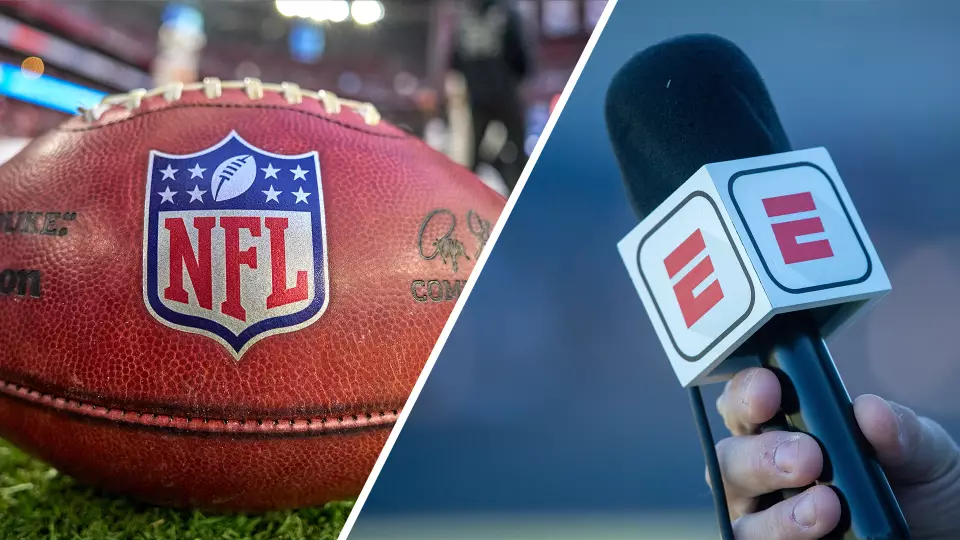The recent announcement of ESPN’s acquisition of the NFL Network and additional NFL media properties marks a pivotal shift in the landscape of football broadcasting. This move isn’t just about expanding ESPN’s content library; it signifies a strategic overhaul of how fans will consume NFL games and related content. By integrating NFL assets into its existing ecosystem, ESPN reinforces its position as the premier sports media conglomerate, keen on innovation and digital dominance. The deal encapsulates a clear understanding: in the modern era, engagement depends on reach, convenience, and dynamic content delivery.
The inclusion of the NFL’s popular RedZone channel under ESPN’s umbrella is particularly noteworthy. This channel, renowned for its fast-paced, highlight-driven coverage, epitomizes the shift toward multiscreen, instant gratification sports viewing. By owning and distributing the trademarked RedZone, ESPN signals an intent to leverage its extensive pay TV and digital influence to maximize RedZone’s reach, while the NFL retains control over the digital rights — a strategic balancing act that preserves the league’s autonomy and opens new revenue avenues.
Transforming Fan Engagement with Innovation and Depth
Encompassing more than just media rights, the deal underscores ESPN’s aggressive push into digital fan engagement. The plan to incorporate NFL content into ESPN’s upcoming direct-to-consumer streaming platform is visionary. This move positions ESPN to directly connect with fans, bypassing traditional cable bottlenecks, and to offer a personalized, on-demand NFL experience. ESPN’s vision doesn’t merely stop at streaming; it seeks to revolutionize how fans interact with football through innovative features—such as integrated fantasy sports, on-demand highlights, and exclusive digital content.
The integration of the NFL’s fantasy football product into ESPN Fantasy Football is a decisive step. Fantasy football has become a cultural phenomenon, and by making ESPN Fantasy Football the official NFL game, the partnership not only boosts user engagement but also deepens the fan’s emotional connection to the sport. This move exemplifies how content and community are inseparable in modern sports media; fans now crave interactivity and participation, not just passive viewing.
Furthermore, the deal increases the total number of NFL games available on ESPN-owned platforms to 28 per season, with some games shifting from ESPN to NFL Network. This reallocation reflects a strategic effort to optimize exposure across multiple platforms, blurring traditional lines between linear TV and digital distribution. The fact that all ESPN-owned games will be accessible both on linear telecasts and streaming underscores an understanding: success hinges on providing seamless, multi-platform access tailored to an increasingly mobile and digitally oriented audience.
A Strategic Power Play for Future Growth
The implications of this deal extend beyond immediate content rights. Disney’s control over the NFL Network and key NFL properties enables ESPN to craft a uniquely comprehensive football ecosystem. The league’s decision to maintain ownership of certain assets like NFL Films and NFL.com, combined with ESPN’s control over the NFL Network, creates a hybrid model that preserves NFL’s legacy and independence while boosting distribution through ESPN’s extensive reach.
This partnership also indicates ESPN’s larger ambitions to dominate the digital sports landscape. With the launch of a $29.99/month direct-to-consumer service, ESPN is poised to redefine sports streaming, making NFL content more accessible and convenient than ever. This initiative exemplifies a clear recognition that the future of sports media belongs to platforms that combine content depth with technological innovation and consumer-centric experiences.
Moreover, ESPN’s willingness to license additional NFL games—beyond the existing seven—demonstrates confidence in its ability to attract subscribers by offering exclusive, high-value content. This move not only enhances ESPN’s competitive position but also challenges traditional broadcasters and streaming services to elevate their offerings to keep pace.
Reshaping the Sports Media Ecosystem
Ultimately, ESPN’s audacious acquisition signifies a broader industry trend—an ecosystem where content ownership, distribution channels, and digital innovation are intertwined. The NFL’s strategic partnership with ESPN isn’t just a financial transaction; it is a manifestation of a shared vision to innovate how football fans experience the sport. Both organizations recognize that the future of sports media is fluid, multi-platform, and deeply user-focused.
As ESPN prepares to roll out its revamped digital services, it does so with full awareness that the media landscape is no longer static. It’s a battleground for relevance, engagement, and loyalty. With this deal, ESPN isn’t just acquiring assets; it’s cultivating a comprehensive, immersive football universe tailored for the digital age. Whether this move will lead to a sustainable competitive advantage or just momentary dominance remains to be seen, but it undeniably sets a new standard for how sports leagues and media companies will collaborate in the future.

